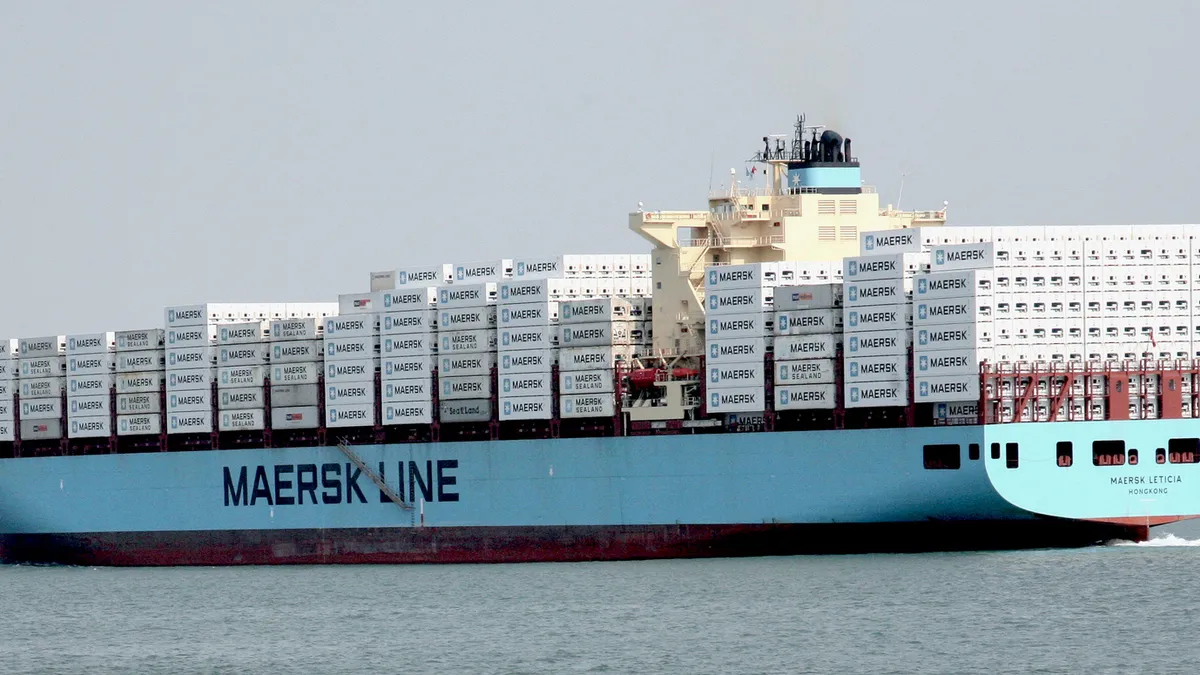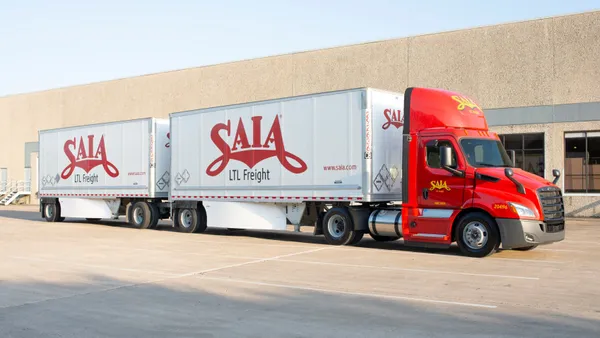Dive Brief:
- Maritime transport of fresh produce reached 108.5 million tons in 2016, for a 4.3% growth in market share, according to a recent Dynamar analysis reported by The Maritime Executive.
- The reefer transport sector — while plagued by industry-wide low rates, weakened new box orders and equipment overcapacity — appears to be growing at a healthy rate, especially when compared to container shipping.
- Overall, the specialized market only saw three mergers in 2016 and has a "healthy" orderbook of 16 new vessels. Dynamar notes the crisis for conventional refrigerated carriers appears to have ended, instead transferring to the container shipping industry.
Dive Insight:
While the refrigerated shipping sector may still be recovering from a transport crisis of its own, recent investments in cold transport show the market's promise and continued growth.
Recent reports indicate demand for refrigerated products — whether they be pharmaceutical, healthcare or food — is increasing globally as worldwide disposable income increases. Yet, the well-documented problem of refrigerated transport is spoilage, where the long transport times required due to global production of these products lead to significant waste, particularly in the fresh produce sector.
Yet, to accommodate the increased demands logistics providers are investing more heavily in cold chain infrastructure that will reduce spoilage and ensure safe transport. A recent report from The Wall Street Journal found global cold-storage capacity reached 600 million cubic meters in 2016, driven largely by growth in emerging markets.
In other words, cold chain infrastructure is becoming a priority at the point of origin as well as destination. For the carriers, this means shippers who previously did not have the means to transport their products across long distances due to high rates of spoilage in the first-mile may now enter the market. Yet these are often smaller producers who may not be accustomed to or aware of the specialized options, and therefore could prefer shipping by container transport.
The Dynamar report points out the equipment needs to service high demand is there, but it also points out some container shipping lines — in particular Maersk Line — seek to dominate the refrigerated container slot market. Whereas the specialized refrigerated transport industry has reportedly not increased its investment in container capacity, remaining at 71,000 reefer plugs in South-North trade lanes throughout 2016, the container shipping industry appears to be turning to refrigerated transport to help weather the low-rate storm.
Maersk recently ordered 14,800 new refrigerated containers to bring the shipping line's capacity to 270,000 containers. In addition, Maersk's acquisition of Hamburg Sud positions it as a leader in inter-American trade. All in all, the two lines will operate a combined 195,000 reefer plugs — more than the specialized industry.
Refrigerated transport is hardly in danger of being overtaken by container shippers. Needs differ, after all. However, the increased investments by the likes of Maersk and Hapag-Lloyd show the industry's potential for growth.














